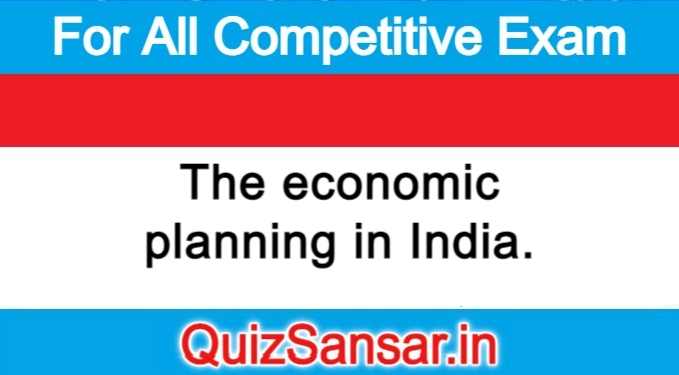
The economic planning in India.
Although these objectives together make a good reading, these have often been made the subject of heated debate and discussion.
Too Ambitious:
One line of criticism is that the plans have had very ambitious objectives. In support of this, it is pointed out that in most cases the objectives have not been realized.
The reasons may be inadequacy of resources or defective implementation of plans, but the fact of their non-fulfilment is there. This line of thinking, however, is not realistic but defeatist.
The essence of planning lies in fixing objectives consistent with the resources available at the time of the formulation of a plan. If in the way resources fall short or implementation is inefficient, it is an occasion to reassess the whole situation rather than to scale down the targets. To scale down the target means to accept a non-plan situation.
Neglect of Agriculture and Employment:
It is pointed out that in the ‘growth-objectives’, a greater attention for long has been devoted to capital goods industries, rather than to activities covering consumer goods.
Of the latter type, agriculture is the most important as it produces largely consumer goods and raw materials for consumer goods industries. It is also argued that employment does not figure prominently in the scheme of basic objectives. At best, employment is taken as a consequence of development.
Predominance of Welfare Consideration:
Another objection is that an undue weightage has been given to the welfare considerations. In an economy with low levels of productivity and large gaps in production, there is little justification for distributive policies or special employment schemes, etc.
It is also pointed out that the large weightage to welfare implied in the social justice objective goes against the efficiency consideration. Similarly, development of certain industries/regions largely for employment sake or for some non-economic considerations reflects little regard for efficient choices in respect of activities locations.
Incompatibility and Inconsistency:
Critics also say that the objectives when seen together are technically illogical. For example, the emphasis on a rapid rise in capital stock does not go well with the objective of reducing inequalities.
The former increases inequalities because in capital goods industries wages form a very small proportion of output/income relatively to profit surpluses. The objective of reducing inequalities on the other hand reduces savings because the poor beneficiaries have low propensity to save.
Again, it is pointed out that for want of information or inadequacy of analytical tools, it is not possible to say whether certain results contemplated in a plan do, in fact, follow from certain objectives. But
When all is said and done, it must be admitted that Indian planning till today lacks firm data about the crucial aspects of the Indian economy.
For example, the figures about the labour force, the persons employed, etc., are not known precisely. Again, quite a large part of investments taking place in agriculture, in small-scale enterprises, etc., are not known fully. Yet again, it is also true that the objectives have often been couched in very general terms as pointed out by economists like Robin Hanson.






